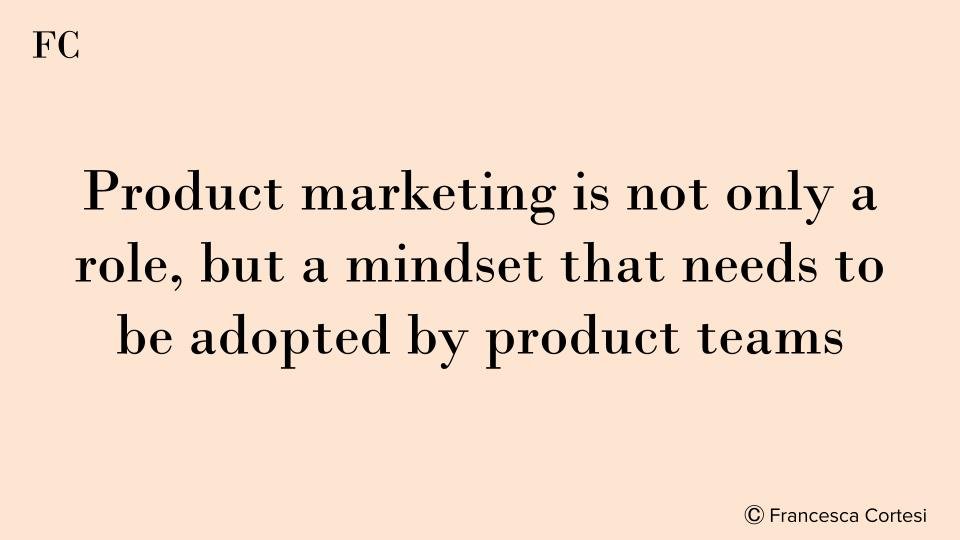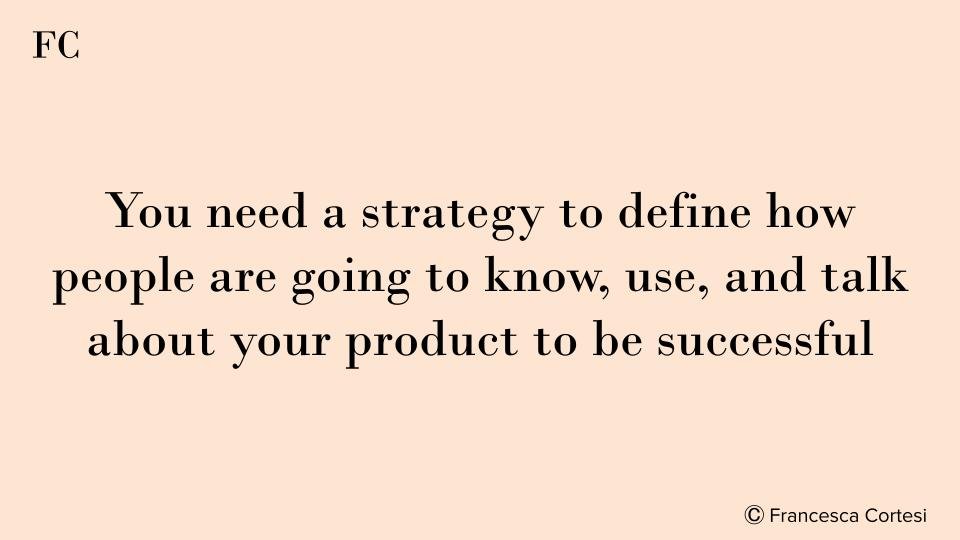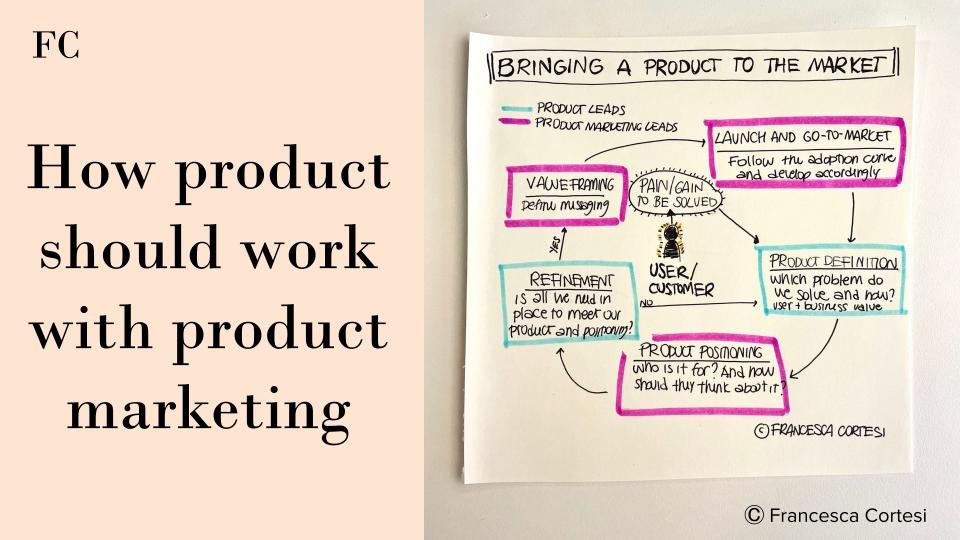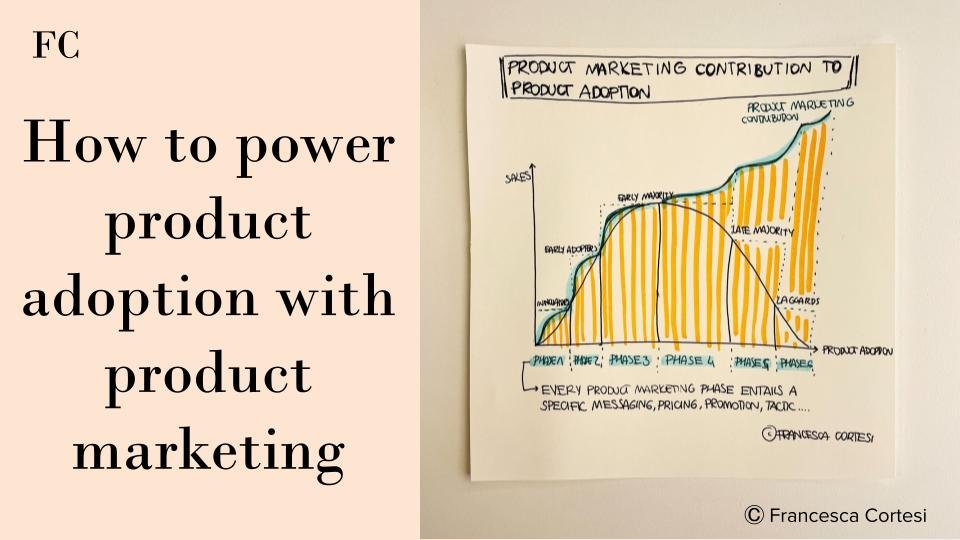My main takeaways from Loved
Product marketing, marketing for tech products, and agile marketing are only some of the terms that have been used to describe the art of launching, adopting, and establishing a digital product. Yet, there was not out there definition of what product marketing actually means. And even less so some concrete examples of how to marry the need for predictability coming from marketing (and its plans, deadlines, and sales cycles) and the continuous discovery that drives product development. Until now, when Martina Lauchengco wrote "Loved, how to rethink marketing for tech products” and created the perfect starting point for anyone who wants to understand a bit more about product marketing.
In her book, Martina goes through all the basics: what is product marketing and its responsibilities, where should product marketing be placed in the organization, and what are the most important skills for product marketers. And she also gives insights on processes and tools to drive marketing for tech products, and support companies and products in all their different phases.
For me, reading the book was a perfect starting point to clarify my thoughts, as well as putting the challenges that I experience in the context of other companies. Here are the main points I take with me:
The role of product marketing: a great product is not enough, you need to take responsibility for how your product will be discovered and talked about
One of the best things about Martina’s book was to get a clear definition of product marketing. Product marketing is not only a role but a mindset that needs to be adopted by product teams. You need a strategy to define how people are going to know, use, and talk about your product. Best if you have a person focusing on it, if not you need to make sure that you have this absorbed in your product’s processes.
Summarizing her ideas in my own words, I would say that
in a world where there are an increasing amount of products having more or less the same functionality, the role of product marketing is to identify the right market, drive adoption, and word of mouth for the product.
If you believe that a good product that really solves a problem is able to do this by itself, I encourage you to think again.
In Martina’s words ”Do not make the mistake of assuming the world know how to think about your product and why it’s valuable. You must frame its value. If you do not do it, other market forces will”.
And exactly helping product with that framing is the role of product marketing
Product role - is to identify which problem to solve and how to do it in a way that creates value for the customer and the business. Everything builds towards a product vision.
Product marketing role - is to understand who the product is for, work with the positioning (how we want the product to be perceived), and craft a story that sales and marketing can tell. Everything builds towards go-to-market. Which in its turn will help push the product adoption curve (more on that later)
While crystallizing those two concepts in my head, I started to visualize the collaboration between product and product marketing as a virtuous loop that has the customer experience at its center. If product builds for solving a user pain or gain that creates value for the business, product marketing can make sure that the right premises are in place to optimize the go-to-market and business growth, like defining the positioning and messaging from a user perspective. Something like this
How I envision the relationship between product and product marketing
For this to work, it requires that the role and responsibilities of product and product marketing are clear, that communication is flawless, and most importantly that we always put the user/customer perspective at the center and are aware of the anti-patterns.
One really common mistake that Martina points out is about launching products when the work is completed (sprint and planning everyone?!) and not when it is best adopted by the customers. We always talk about customer centricity and solving customer problems, yet this is something that we rarely think about from an external perspective and is mainly steered by internal factors. This approach could work for a non breaking launch, or a soft one, but when you need the full go-to-market machine power to support you, the customer context needs to be taken into consideration. Just look at this example
From the book Loved, by Martina Lauchengco
Release Scale: a concrete framework to align discovery and predictability
Working with product, how many times, have been part of a discussion about a mismatch in needs between product and marketing? I’ve been in many, and the majority of them can be reconnected to a common root cause: aligning go-to-market activities (some of which require months of preparations) and discovery-driven development, is not the easiest task. Velocity, lack of predictability, and light-weighted documentation are not best friends of marketing teams that are used to predictable cadence and planning to do their job well. So how do we solve this?
Martina suggests a concrete framework that I thought was really interesting to both align expectations, and put the spot on what is really important for every single product launch: Release Scale.
The release scale is a tool for alignment between product and the go-to-market team (marketing, sales, and support). It provides an overview of the goals, defines the activities required, aligns expectations on both sides, and lowers the friction created by unpredictable discovery vs set dates for activities.
This framework is a simple yet brilliant way to highlight that not all releases should be treated the same, and the more ambitious the go-to-market goal, the higher the coordination and communication required. Here is an example of how it could look like
From the book Loved, by Martina Lauchengco
The double curve: powering product adoption with product marketing
Probably my biggest takeaway from Martina’s book is connected to broadening my perspective about product-market fit and product adoption curve.
So far, when I thought about product adoption and market-fit, I mainly thought about how you can prove market-fit and then push the adoption curve a little bit further by:
first demonstrating that you are solving a real user problem (market fit/innovators)
then expanding by solving the same problem for new users, broadening the set of needs you serve, and leveraging growth loops, especially if you are working with networked products (from early adopter to late majority).
I thought I had a good view of it until this book really opened a new perspective. What if I start to think about 2 curves instead of one?
On one side the product curve, is the one I am familiar with. It tells you if you are really solving a problem for the users, if you are doing it in a better or unique way than what is on the market, and if you keep on delivering product value. This is what product is all about, focusing on finding the right problem to be solved and the best way to solve more needs or for more people.
On the other side, Martina talks about a product marketing curve, which builds on the product one, but is lagging a bit behind, as it needs product development to move forward. This curve tells you if you are finding the right positioning for the product by nailing messaging, pricing, distribution, advertising, and promotion. And if you do, it will show you a bump in sales as the product adoption curve evolves. When I think about it, I imagine the two curves interacting like this.
How I think about the product adoption curve and the product marketing curve
Thinking about the two curves is not only a good exercise to understand which kind of effort is needed to achieve a specific goal (i.e. more revenues -> product marketing, more users -> product), but it is also an excellent exercise in segmentation. By connecting product phases with positioning it should be easier to craft a more detailed go-to-market plan that defines which customers we shall start with, which are important to acquire, what they need to be interested in the product, and which kind of revenues can we expect in the different phases? What I have seen many times is that product team builds MVP and slimmed-down releases to prove that there is a market fit before investing too much in the product itself (exactly how you should do it), yet we talk about that product as if it was the real deal. And we pitch it to all the customers, even if for some of them is too soon.
With that, we create a mismatch between product, positioning, and users that could create a real go-to-market problem in the long run. If your sales team is disappointed by the features, and your customers thinking about some extra advanced development, you probably have signs of a mismatch between product development and go-to-market.
Main takeaway: think about how the world wants to see your product based on what your product actually can do, and then evolve based on product development. Otherwise, you will create a distortion between perception and usage.
Here the collaboration between product and product marketing is crucial, and when done right, it can really create magic. Just look at this example about the iPhone
From the book Loved, by Martina Lauchengco
The importance of positioning
Multiple times during the book Martina points out the difference between positioning and messaging. Positioning is the way your product is perceived by the customer and the market. This is a combination of what you say (messaging), how your product work, the experience with all your touchpoint, and how people talk about your product. It is your long-term game and what the author argues needs to be in place first to make sure to rightly articulate the customer value which is at the heart of the go-to-market plan.
Yet the trap we all fall into too often is to focus all the attention on messaging, and what we want to be said about a specific release.
Properly understanding positioning is fundamental for messaging, but messaging alone could make your positioning really hard to understand if pushed in too many different directions based on short-term releases.
This made me think about the wonders that positioning done right can do. Apple immediately popped into my head - with their sleekness shining through all they do from the brand, to shop experience, product, and customers who buy their products…there is not one single thing that doesn’t breathe creative innovator in what they do. But while thinking of Apple as the best in class, I also reflected on real user cases when a mismatch in positioning occurred during my career. And I could point out these 4 areas:
We created expectations the product in its current phase couldn’t meet - see above
We failed to identify the right target group for the product
The go-to-market engine was not aligned and sales, marketing, and support didn’t have a clear picture of what to say to create a common story
Our positioning was influenced by other forces in the market that we couldn’t control and our offering failed to overweight them
While reflecting on it, I could point at mistakes I made with all the above with the products I worked with. Yet I did not realize they were connected with positioning, therefore having landed now on a way of framing them is super helpful.
And having this mental model also made me think about positioning in a broader term: if one important part of positioning is thinking about how a product/company makes you feel - couldn’t it be a good idea to start imagining it together with a product vision? I believe it could be a super interesting exercise to fuel empathy and really force product and product marketing to have a deep understanding of the customers and how we will make their lives a bit better.















